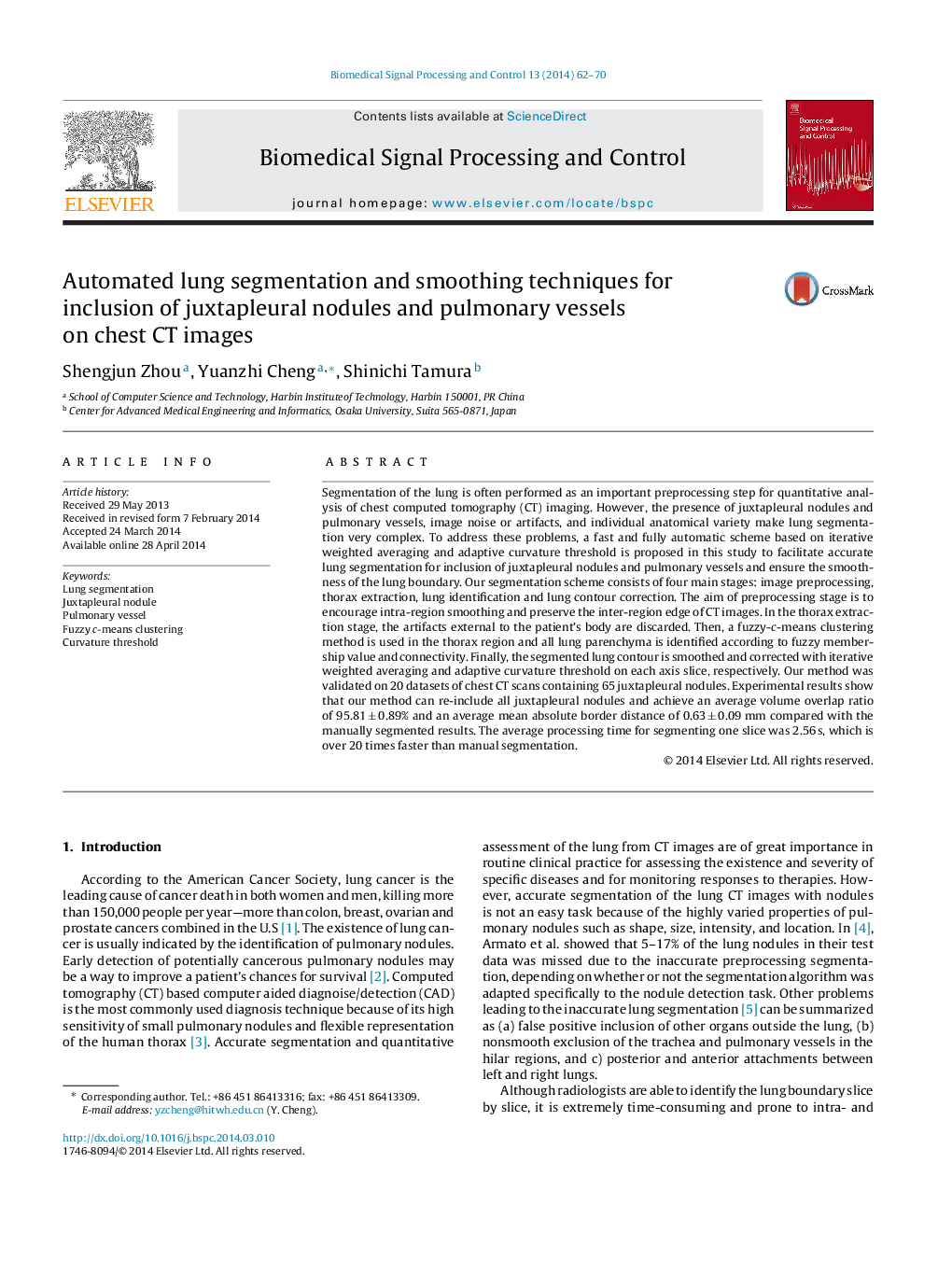| Article ID | Journal | Published Year | Pages | File Type |
|---|---|---|---|---|
| 562573 | Biomedical Signal Processing and Control | 2014 | 9 Pages |
•Fully automatic lung segmentation and smoothing techniques are proposed.•The method can include juxtapleural nodules and pulmonary vessels properly.•Experimental results show the effectiveness of our approach.•The average processing time is over 20 times faster than manual segmentation.
Segmentation of the lung is often performed as an important preprocessing step for quantitative analysis of chest computed tomography (CT) imaging. However, the presence of juxtapleural nodules and pulmonary vessels, image noise or artifacts, and individual anatomical variety make lung segmentation very complex. To address these problems, a fast and fully automatic scheme based on iterative weighted averaging and adaptive curvature threshold is proposed in this study to facilitate accurate lung segmentation for inclusion of juxtapleural nodules and pulmonary vessels and ensure the smoothness of the lung boundary. Our segmentation scheme consists of four main stages: image preprocessing, thorax extraction, lung identification and lung contour correction. The aim of preprocessing stage is to encourage intra-region smoothing and preserve the inter-region edge of CT images. In the thorax extraction stage, the artifacts external to the patient's body are discarded. Then, a fuzzy-c-means clustering method is used in the thorax region and all lung parenchyma is identified according to fuzzy membership value and connectivity. Finally, the segmented lung contour is smoothed and corrected with iterative weighted averaging and adaptive curvature threshold on each axis slice, respectively. Our method was validated on 20 datasets of chest CT scans containing 65 juxtapleural nodules. Experimental results show that our method can re-include all juxtapleural nodules and achieve an average volume overlap ratio of 95.81 ± 0.89% and an average mean absolute border distance of 0.63 ± 0.09 mm compared with the manually segmented results. The average processing time for segmenting one slice was 2.56 s, which is over 20 times faster than manual segmentation.
